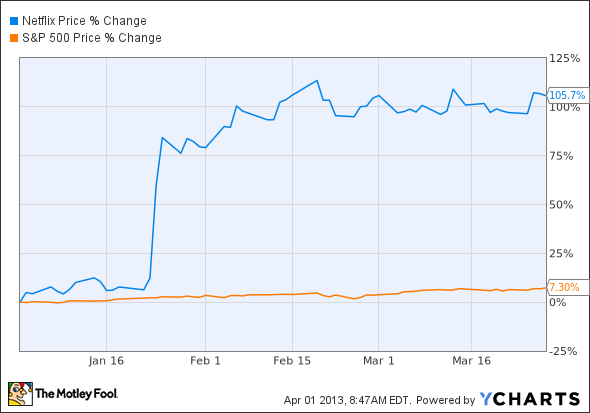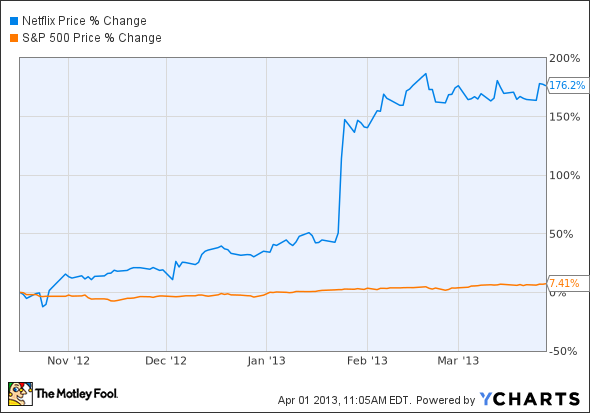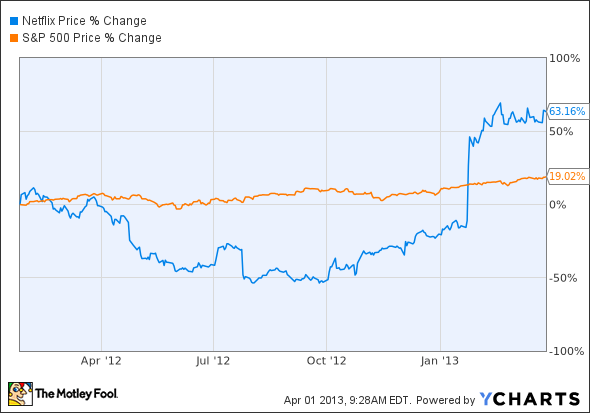On the back of a solid first-quarter performance capped with an all-time nominal (nominal) high, stocks opened flat this morning, with the S&P 500 (^GSPC +1.54%) down 0.2% and the narrower, price-weighted Dow Jones Industrial Average (^DJI +0.81%) up 0.04% as of 10:10 a.m. EDT.
Netflix: Two thumbs up
The best-performing stock in the S&P 500 during the first quarter was that of movie platform Netflix (NFLX +1.52%), which more than doubled:
Critics will point to the stock's sky-high price-to-earnings multiple: "Trading at 138 times the earnings-per-share estimate for the next 12 months, the shares are massively overvalued and will come crashing down!" To see why that isn't necessarily the case, consider the share performance since Oct. 17, 2012, the date at which they achieved their highest forward P/E since the beginning of 2012, at nearly 300:
The shares have nearly tripled! This graph shows that it's entirely possible for a seemingly overvalued stock to deliver a stellar return. Note that this return was not the result of the shares becoming more overvalued, as the price-to-earnings was cut in half over this period. Rather, it's earnings growth and expectations that did the heavy lifting, with the next 12 months' EPS estimate surging from $0.22 to $1.37.
Still, I don't want to leave you with the impression that the shares aren't without risk. My final graph shows the performance from another peak in the price-to-earnings multiple -- at 271 -- established on Jan. 26, 2012:
Yes, Netflix shares have soundly beaten the market over this period, but shareholders had to ride out a peak-to-trough downturn of 58% in order to collect those returns. That's the sort of nerve-rattling volatility that most investors are unable to tolerate.
Stocks like Netflix live and die by the sword of growth, as their valuations are extremely sensitive to this input. That's the reason they demonstrate massive share-price volatility. Netflix shares don't look as expensive as they once did, but let's be clear: The growth assumptions embedded in that number remain aggressive. If you buy (or own) the shares today, you need to do three things:
- Quantify those growth assumptions.
- Get comfortable with your assessment of the likelihood that the company will meet those expectations.
- Accept that the shares will exhibit substantial volatility as the company continues to execute on its growth plan.



